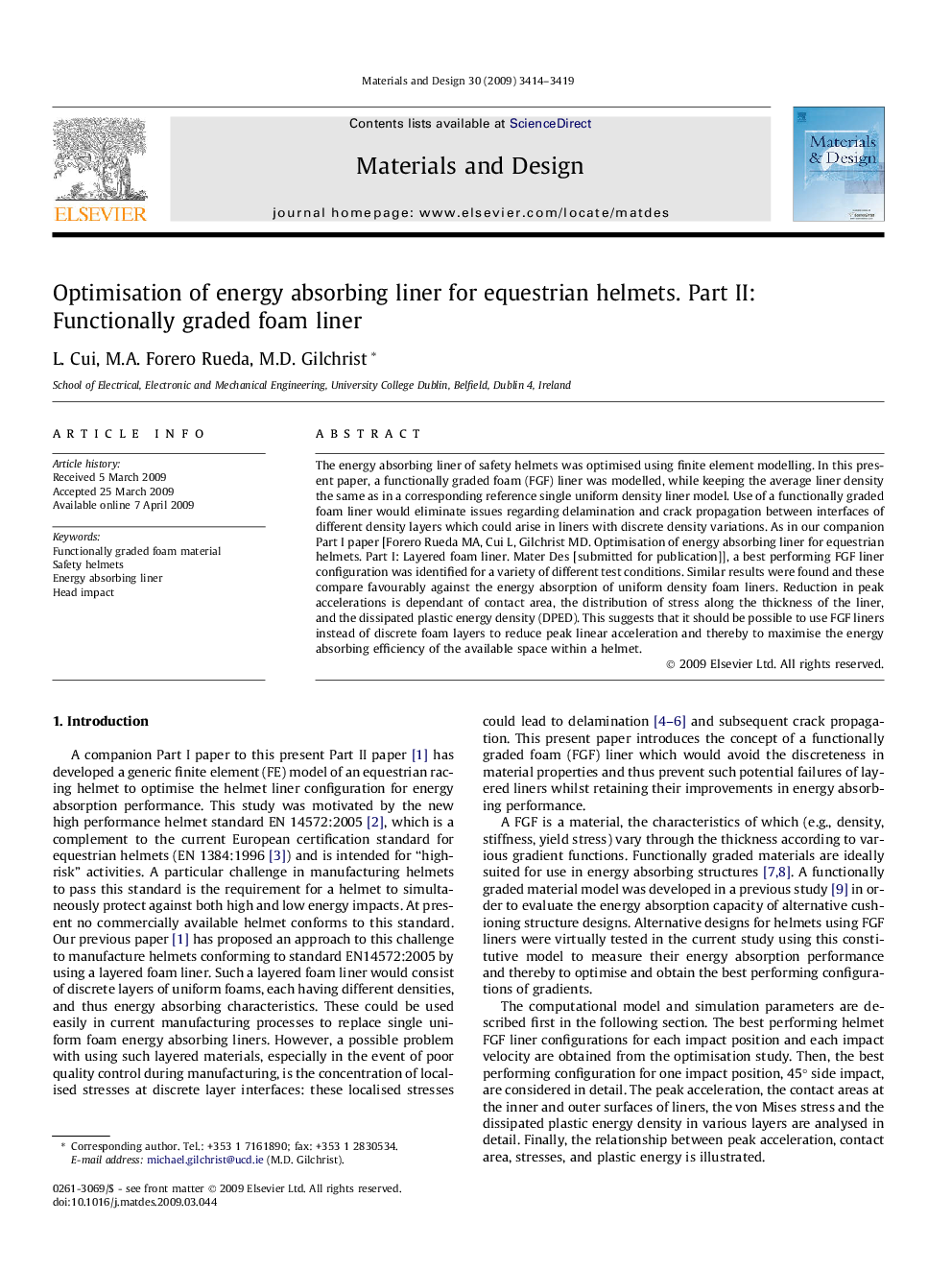| Article ID | Journal | Published Year | Pages | File Type |
|---|---|---|---|---|
| 832626 | Materials & Design (1980-2015) | 2009 | 6 Pages |
The energy absorbing liner of safety helmets was optimised using finite element modelling. In this present paper, a functionally graded foam (FGF) liner was modelled, while keeping the average liner density the same as in a corresponding reference single uniform density liner model. Use of a functionally graded foam liner would eliminate issues regarding delamination and crack propagation between interfaces of different density layers which could arise in liners with discrete density variations. As in our companion Part I paper [Forero Rueda MA, Cui L, Gilchrist MD. Optimisation of energy absorbing liner for equestrian helmets. Part I: Layered foam liner. Mater Des [submitted for publication]], a best performing FGF liner configuration was identified for a variety of different test conditions. Similar results were found and these compare favourably against the energy absorption of uniform density foam liners. Reduction in peak accelerations is dependant of contact area, the distribution of stress along the thickness of the liner, and the dissipated plastic energy density (DPED). This suggests that it should be possible to use FGF liners instead of discrete foam layers to reduce peak linear acceleration and thereby to maximise the energy absorbing efficiency of the available space within a helmet.
